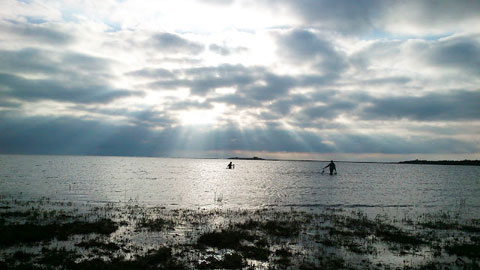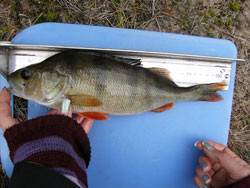Overfishing Causes Extinctions of Local Fish Populations
A study conducted by the University of Turku shows that overfishing can drive fish populations into extinction. When gene complexes that are adapted to local conditions are lost, fisheries recovery becomes difficult.

At the moment, fishing pressure and the evolutionary changes it causes in the life history traits of fish are some of the most intensively studied topics in fish biology.
A joint research project of the University of Turku, the University of Helsinki, the University of Tartu and the Estonian University of Life Sciences explored the consequences of overfishing using a unique dataset, which opened a window into 27 years of history of the perch population in Matsalu Bay, Estonia.
The Original Perch Population Dies Out
 According to Docent Anti Vasemägi from the Biology Department of the University of Turku, a viable perch population lived in Matsalu Bay during the Soviet era, but after Estonia regained its independence, fishing increased much more intensively than the population could take.
According to Docent Anti Vasemägi from the Biology Department of the University of Turku, a viable perch population lived in Matsalu Bay during the Soviet era, but after Estonia regained its independence, fishing increased much more intensively than the population could take.
– We have studied the changes that have occurred in the long recovery period after the crash and found out that compared with the Soviet era, the fish are smaller and they also become sexually mature at an earlier age. Such changes have typically been considered as the signs of strong evolutionary pressure on a population caused by overfishing, Vasemägi tells.
Genetic studies, however, demonstrated that the changes observed in the fish of Matsalu Bay were actually caused by the extinction of the local population.
– When we analysed the genetic structure of the perch population, we found out that the changes did not take place in the original fish of the bay. The original population had practically died out and fish from other populations had migrated to the bay, Vasemägi explains.
Recovery Requires Genetic Diversity
The study sheds light on the factors that hinder the recovery of overfished populations. The fish that migrated to the bay did not quickly form a new population, even though the conditions were favourable. According to the scientists, the cause for this seems to be the loss of locally adapted gene complexes, which were destroyed along with the extinction of the local population.
– Loss of genetic diversity is always a risk. A fish population can recover to the size it was prior to the crash. If, however, the best-adapted genotypes have been lost, recovery may be very slow. In addition, the population will have lower chances of surviving further threats, such as climate change, states Docent Anna Kuparinen from the University of Helsinki.
Towards Sustainable Future with the Help of Genetic Studies
 Only recently, the European Parliament voted for the European fishing reform and passed a resolution which, for the first time, includes ecologically sustainable fishing quotas.
Only recently, the European Parliament voted for the European fishing reform and passed a resolution which, for the first time, includes ecologically sustainable fishing quotas.
Vasemägi and Kuparinen consider this a step forward towards sustainable fishing policy and say that changes in fishing legislation should be made soon. The scientists consider that it is essential to build a policy that can prevent population crashes by regulating fishing.
– As our results show, studies of the genetic structure of populations are an essential part of fisheries management. Without them, local extinctions may go completely unnoticed. It is important to understand the factors that hinder the recovery of populations at both the individual and genetic level, because there is strong evidence that local adaptation of fish is a far more significant phenomenon than we have understood so far, Vasemägi and Kuparinen say.
The study of the Matsalu Bay perch population was funded by the Academy of Finland and the Estonian Science Foundation.
The research is published in an esteemed scientific journal Evolutionary Applications.
Text: HB
Photographs: Lilian Pukk and Anti Vasemägi